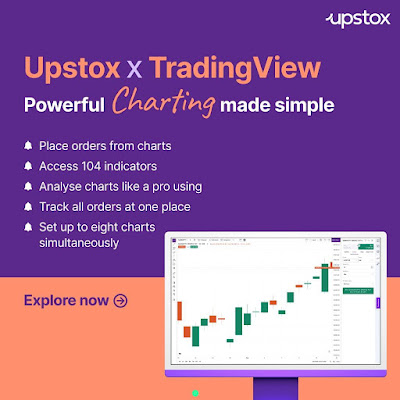The stock market can be a complex and intimidating place, especially for beginners. There are many terms and concepts that can be confusing, making it difficult to understand how things work. This blog post aims to demystify some of the most basic stock market terms, so you can feel more confident navigating the investment world. 1. P/E Ratio (Price-to-Earnings Ratio) The P/E ratio is a metric used to compare a company's stock price to its earnings per share (EPS). It essentially tells you how much you are paying for each rupee of a company's earnings. A higher P/E ratio can indicate that a stock is more expensive relative to its earnings, while a lower P/E ratio can indicate that a stock is cheaper. However, it is important to remember that the P/E ratio is just one factor to consider when evaluating a stock, and it should be compared to similar companies within the same industry. 2. Dividends Dividends are a portion of a company's profits that are paid out to its sharehol...
Short-term trading in the stock market can be a way to potentially generate quick profits, but it also comes with higher risks. In order to manage these risks effectively, it's important to have a solid plan in place and be disciplined in your approach. Here are some key strategies for managing risk in short-term trading:
Set Clear Entry and Exit Points:
One of the most important aspects of short-term trading is having a clear plan for when to enter and exit a trade. This means setting specific price targets for both buying and selling, based on your analysis of market trends and indicators. By having a clear plan in place, you can avoid making impulsive trades based on emotions or speculation.
One of the most important aspects of short-term trading is having a clear plan for when to enter and exit a trade. This means setting specific price targets for both buying and selling, based on your analysis of market trends and indicators. By having a clear plan in place, you can avoid making impulsive trades based on emotions or speculation.
Use Stop-Loss Orders:
Stop-loss orders are a key tool for managing risk in short-term trading. These orders automatically trigger a sale if a stock's price falls below a certain level, helping to limit your losses in the event of a sudden downturn. It's important to set stop-loss orders at an appropriate level that allows for some volatility in the market, while also protecting against significant losses.
Stop-loss orders are a key tool for managing risk in short-term trading. These orders automatically trigger a sale if a stock's price falls below a certain level, helping to limit your losses in the event of a sudden downturn. It's important to set stop-loss orders at an appropriate level that allows for some volatility in the market, while also protecting against significant losses.
Keep an Eye on Market News and Events:
Short-term trading requires staying informed about market news and events that can impact stock prices. This means monitoring economic indicators, company earnings reports, and global news events that may affect specific industries or sectors. By staying informed and reacting quickly to changes in the market, you can make more informed trading decisions and manage your risk effectively.
Short-term trading requires staying informed about market news and events that can impact stock prices. This means monitoring economic indicators, company earnings reports, and global news events that may affect specific industries or sectors. By staying informed and reacting quickly to changes in the market, you can make more informed trading decisions and manage your risk effectively.
Practice Risk Management:
Risk management is an essential part of short-term trading. This means only investing a small portion of your portfolio in short-term trades, setting strict stop-loss limits, and using technical analysis to identify trends and potential entry and exit points. By implementing these risk management practices, you can help to minimize losses and maximize potential profits.
Risk management is an essential part of short-term trading. This means only investing a small portion of your portfolio in short-term trades, setting strict stop-loss limits, and using technical analysis to identify trends and potential entry and exit points. By implementing these risk management practices, you can help to minimize losses and maximize potential profits.
Be Disciplined:
Finally, discipline is key to managing risk in short-term trading. This means sticking to your trading plan, avoiding emotional trading decisions, and being patient when waiting for market conditions to align with your strategy. It's important to have a long-term perspective and avoid chasing short-term gains at the expense of long-term success.
In conclusion, short-term trading in the stock market comes with higher risks, but it's possible to manage these risks effectively by setting clear entry and exit points, using stop-loss orders, staying informed about market news and events, practicing risk management, and being disciplined in your approach. By following these strategies, you can increase your chances of success in short-term trading while managing your risk effectively.
Finally, discipline is key to managing risk in short-term trading. This means sticking to your trading plan, avoiding emotional trading decisions, and being patient when waiting for market conditions to align with your strategy. It's important to have a long-term perspective and avoid chasing short-term gains at the expense of long-term success.
In conclusion, short-term trading in the stock market comes with higher risks, but it's possible to manage these risks effectively by setting clear entry and exit points, using stop-loss orders, staying informed about market news and events, practicing risk management, and being disciplined in your approach. By following these strategies, you can increase your chances of success in short-term trading while managing your risk effectively.


Comments
Post a Comment